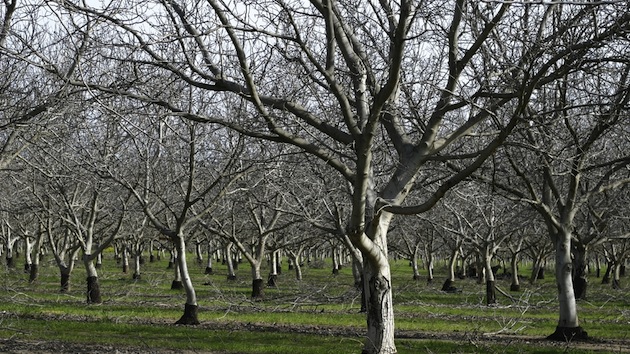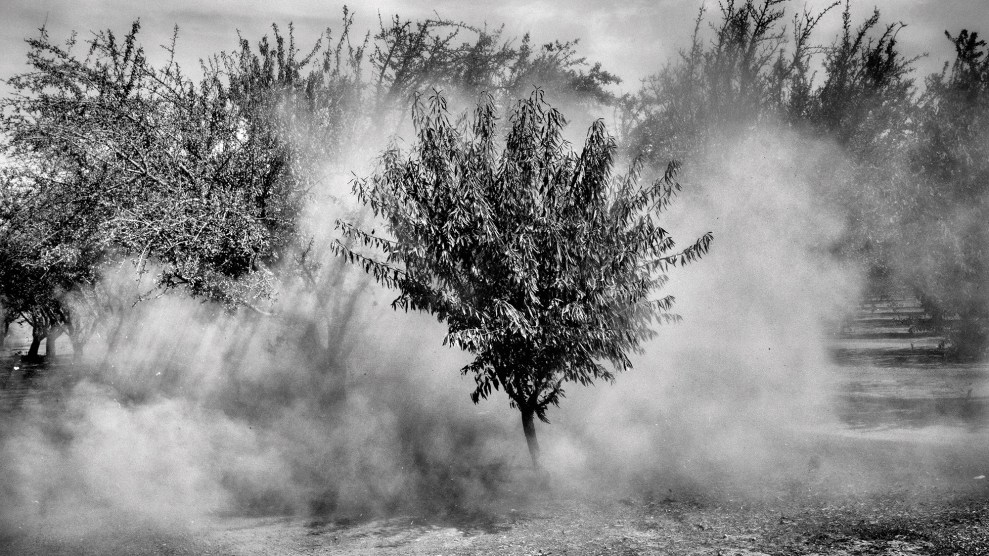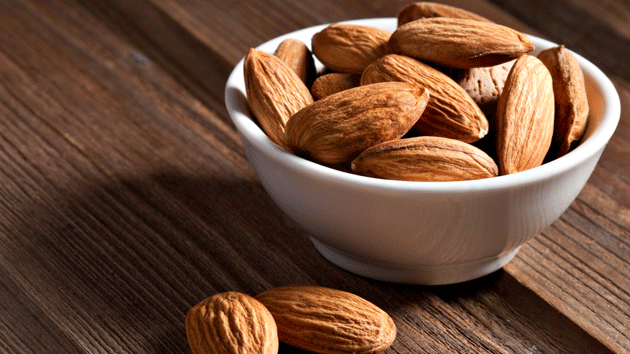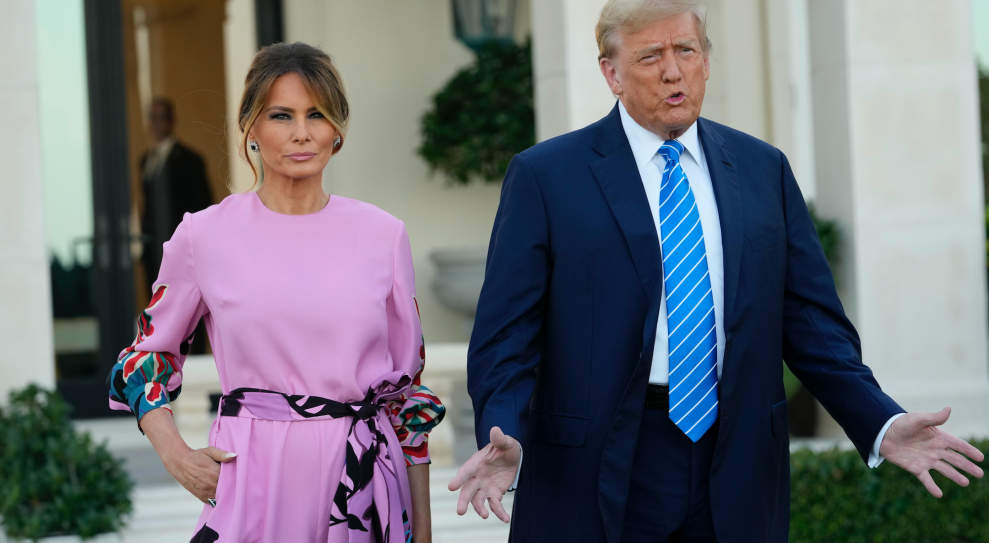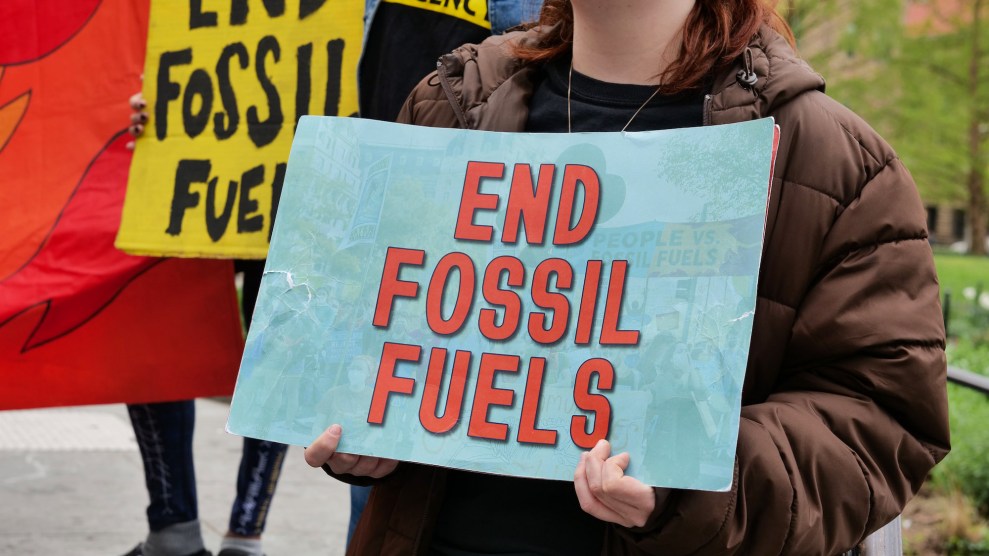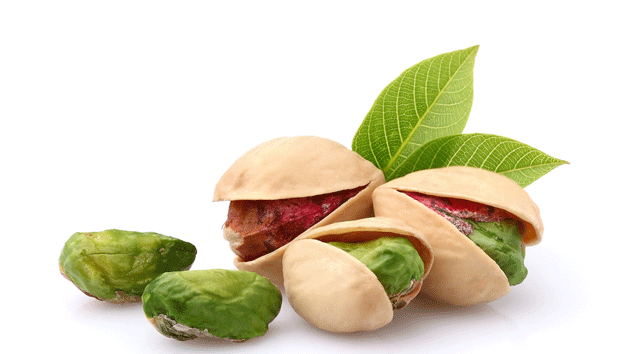
<a href="http://www.shutterstock.com/cat.mhtml?lang=en&language=en&ref_site=photo&search_source=search_form&version=llv1&anyorall=all&safesearch=1&use_local_boost=1&searchterm=pistachios&show_color_wheel=1&orient=&commercial_ok=&media_type=images&search_cat=&searchtermx=&photographer_name=&people_gender=&people_age=&people_ethnicity=&people_number=&color=&page=1&inline=191034686" target="_blank">Dionisvera</a>/Shutterstock
Amid an epochal drought with no end in sight, farmers in California’s Central Valley have entered a veritable well-drilling arms race to capture water from fast-depleting aquifers, causing large swaths of land to sink and permanently reducing its ability to hold water. But none of that has reined in the pistachio industry’s relentless expansion. Acreage devoted to pistachios grew more than 20 percent between 2012 and 2014; at a conference in March, nut magnate Stewart Resnick, co-owner and president of Wonderful Pistachios, urged growers to plant more, more, more, claiming that the tasty nuts deliver an even tastier $3,519 average per acre profit. (Resnick’s team also beseeched growers to invest some of their windfall in lobbying to maintain industry-friendly water rules.)
But if California’s epic water crunch can’t slow down the state’s pistachio juggernaut, here’s one thing that just might: a possible deal, now being negotiated within the United Nations, to end trade sanctions against Iran if it agrees to curb its nuclear program.
What does Iran have to do with California pistachios? Pretty much everything, it turns out. Flash back to 1979. Iran, governed for decades by the US-friendly Shah, dominated the global pistachio trade. Pistachios barely registered as a crop in California. Then came the Iranian revolution and the hostage crisis; overnight, the nation went from trusted trading partner to pariah—a status it has held, more or less, ever since. With Iranian pistachios banned in the United States, California farmers sensed an opportunity and started putting in groves. By 1990, the state’s pistachio acreage had more than doubled. By 2014, it stood at more than 294,000 acres—nearly ten-fold growth since the Shah’s fall. (Numbers here.)
But if the Iran nuke deal goes into effect, trade barriers will tumble and Iranian pistachios will again be available in the United States—exposing California farmers to competition and possibly threatening those windfall profits being brandished by Resnick. “Iran has far more clout in the market for cocktail nibbles than it does in crude trading,” Bloomberg notes. “While it ranks only as the world’s seventh-largest oil producer, the Middle Eastern country vies with the U.S. to be the biggest pistachio grower.”
Then there’s Europe, a market worth about $300 million to US growers. Iranian pistachios aren’t banned outright there, Bloomberg reports, but are severely constrained by broader sanctions on banking and shipping. A deal on nukes would change all that.
No one knows precisely how much an open market for Iranian product would affect prices for the profitable nibbles. But Bloomberg speculates the “biggest losers may be Californian farmers who have doubled pistachio acreage over the past ten years despite drought conditions.”

